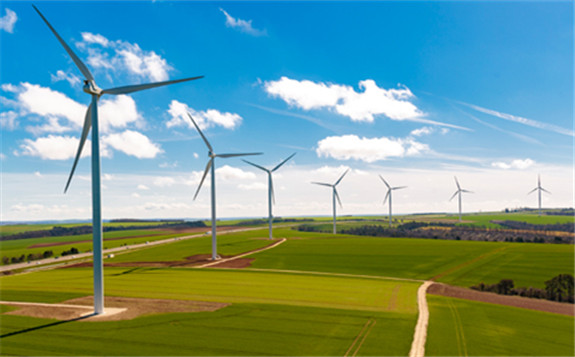Europe added 4.9 GW of new wind energy capacity in the first half of 2019, WindEurope said on 25 July, releasing new data, which also showed the combined installations of new onshore and offshore wind capacity is up on the same period last year (4.5 GW), but onshore installations were down due to serious issues in Germany.

According to WindEurope figures, Europe installed 2.9 GW of onshore wind in the first half of the year. This is down on the 3.3 GW installed in the same period last year. Installations were particularly poor in Germany, which had its worst first half of the year since 2000, WindEurope said, adding that industry expects installations to pick up in the second half of the year, but German grid connected volumes for 2019 as a whole will be lower than historical levels. Of all European countries, France had the most onshore installations with 523 MW.
“It was a good start to the year for offshore wind growth. But onshore wind installations were poor these past six months,” WindEurope Chief Policy Officer Pierre Tardieu said, adding that Germany had the lowest first half of the year for new onshore wind installations since 2000. “Permitting challenges remain the key bottleneck: 11 GW of onshore wind are stuck in the permitting process in Germany. And the transition to auctions, where so-called ‘community projects’ were allowed to bid in auctions without a permit back in 2017, has been messy. Many of these projects still need to be built,” he argued.
“With France, which had a good first 6 months, Spain, Norway and Sweden will now have to help pick up the slack in the second half of the year,” Tardieu said. “The EU has set a renewable energy target of 32% for 2030 and is talking about a net zero economy by 2050. The rate of installations we’ve seen so far this year won’t get us there,” he argued.
He called on European countries, which are finalising their National Energy & Climate Plans to 2030, to give as much detail as possible on the policy measures that will allow a smooth and robust deployment of renewables. “The auction schedule, what they will do to streamline permitting, how they will replace the wind farms that are coming to the end of their operational life. It’s this kind of detail the industry needs to plan ahead and help deliver on Europe’s climate and energy ambitions cost effectively,” Tardieu said.
Onshore wind installations are typically stronger in the second half of the year, WindEurope said, adding that this tendency is particularly pronounced in Nordic countries where installation activity is strongest in Summer months.
“Turbine orders and market activity suggest we will see significant volumes grid connected in Sweden and Norway in the second semester. Large volumes are also expected in Spain on the back of the 4.1 GW auctioned in 2017 and 2018,” WindEurope said.
According to the latest data, 1.9 GW of new offshore wind was installed in the first half of the year, up from the 1.1 GW added in the same period in 2018. The UK (931 MW), Denmark (374 MW), Belgium (370 MW) and Germany (252 MW) accounted for these installations. This includes Hornsea 1 in the UK which, when completed, will be the world’s largest wind farm with 1.2 GW.
In the first half of 2019 Europe invested €8.8bn in the construction of future wind farms, €6.4 billion in onshore wind and €2.4bn in offshore wind. These investments will result in 5.9 GW being installed and grid connected over the next two to three years. France and the Netherlands led investments.